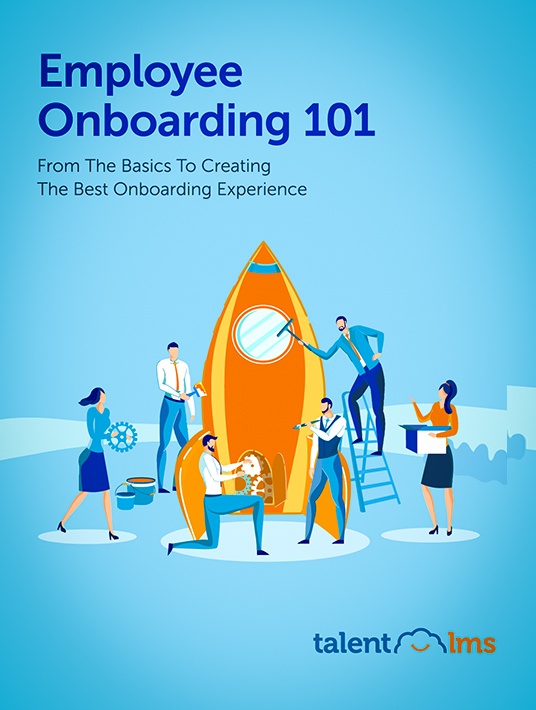From The Basics To Creating The Best Onboarding Experience
The modern workplace is nothing like it used to be. It’s technologically advanced, inclusive, flexible, and fair. But it’s also fast-paced and demanding. It doesn’t operate on seniority but calls for diverse skills and competencies. Modern employees are different from their precursors, too. They are more curious, better informed, and adaptive. As a result, they have different expectations of their employment. Modern employees seek to work in a company where they are respected, and whose values they can identify with. They are looking for a workplace where they can take on new challenges, sharpen skills, and grow professionally. The purpose of this eBook is to create the best onboarding experience and exceed expectations in every way.

This eBook is very well researched and engaging. Employee onboarding is a very vital process within our organization, so I’m predisposed to enjoy a guide like this. Still, I think every L&D professional will take something from this and ought to read it. TalentLMS has done an excellent job creating something that is beneficial to all, as it covers a vast array of subjects.
About This eBook
Onboarding starts on day one. Most employers are familiar with the concept of employee onboarding. What they struggle with is proper implementation. Different studies and surveys suggest that companies get all types of things wrong when onboarding new employees: duration, scope, and consistency, among others. This guide also starts on day one. It thoroughly explains what the definition of employee onboarding is and why it is so important, the basics of creating an effective onboarding program, what challenges you should expect to meet along the way, how to get feedback on the onboarding experience, and how to evaluate the success or failure of your onboarding process.
What Is Onboarding Anyway?
According to Bauer and Erdogan, onboarding, also known as organizational socialization, is management jargon first created in the 1970s that refers to the mechanism through which new employees acquire the necessary knowledge, skills, and behaviors in order to become effective organizational members and insiders. Onboarding is a long-term process that involves training, on-the-job observation and support, and "welcome" activities. The goal of onboarding is to help new hires achieve task mastery, understand the goals and expectations of their role, and absorb the company culture.
Is It Really Such A Big Deal?
Employee onboarding is extremely important. All HR professionals agree that onboarding new employees is essential, and the employees themselves feel that this is a necessity. Sadly though, not every company has a formal onboarding process in place, but they would if they understood the benefits.
Employees who go through onboarding are more productive and time-efficient than those who don't. For an organization, time-efficiency is a blessing in every aspect, as it increases the value of an employee, the company's profits, and the satisfaction of the customers. Furthermore, the benefits for the employee are even greater. When a new employee starts meeting their goals and contributing meaningfully, they also begin to feel part of the team and not just "the new employee." On the flip side, employees who don’t receive onboarding are more likely to think about leaving the company. This is a huge red flag, of course. Not deploying onboarding is a high-risk decision. Onboarding is a decisive move toward increasing employee retention.
There’s a lot to gain from creating a fullfledged onboarding program; new employers feel happier, are more productive, and acclimate faster. Plus, they are more likely to stay with the company for the long haul and recommend you to their network. The only question now is how you can design an effective employee onboarding experience so that both parties reap the benefits.
How Do You Create The Best Onboarding Experience?
There are so many points to check off your employee onboarding checklist, but it all boils down to this: onboarding should begin before the employee arrives and end well after the official skills training is over. Skills and competencies can be learned quickly with the help of the right training platform, but adjusting in a new workplace takes longer. To facilitate employee integration, pair newcomers with a mentor and make sure managers are present showing their support throughout the process.
Conclusion
TalentLMS is known for their attention to detail and the high quality of their products, and this eBook reflects this perfectly. Employee onboarding is a long journey, but you can’t afford to skip it. Be certain that Employee Onboarding 101: From The Basics To Creating The Best Onboarding Experience has given you all the guidance you need to create a first-class onboarding experience for your new employees.

